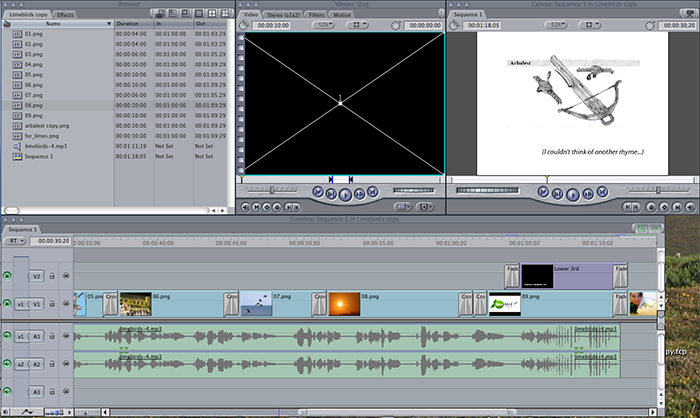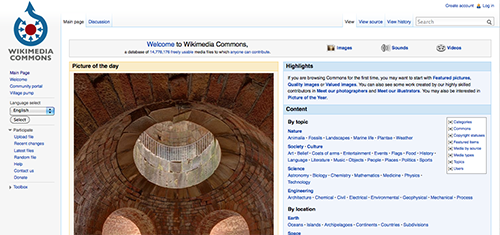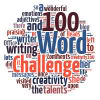by Mayumi-H | Mar 27, 2013 | Process
Most folks likely didn’t notice, but I was away last week, “away” meaning cramped into an editing suite, poring over timecode and doing frame extraction. I’m back again, but last week’s work has stayed with me. Mostly, because editing video always makes me think of this scene: the Warriors gang fighting off the Baseball Furies, from the 1979 film, The Warriors.
[youtube http://www.youtube.com/watch?v=zL0ipXUD-uU?rel=0]
Oh, Ajax, you pithy pugilist, you!
A fight scene without a soundtrack instantly feels much more violent than a fight scene set to music of any kind. That silence can often work in a filmmaker’s favor. Director Walter Hill says he wanted to preserve a cartooniness with this scene from The Warriors, so he kept the music in. That’s not a critique, for musical sound and rhythm can also do a fine job of adding tension, excitement, and drama, just as well as silence. It all depends on how it’s used.
When we write, we’re not given the luxury of pumping music at our readers. So, how do we create the same level of tension with words alone?
One idea? Choose your words carefully for more than just their meaning.
Writers often think they work in silence, because words are static on a page. But the rhythm of words can be just as important as what they mean. Poets and lyricists understand this better than most other writers, because their space, time, or meter is often limited. But even the self-proclaimed short story writer or novelist shouldn’t ignore that poetic ear.
Try speaking your scene aloud. You’ll hear how the choice and cadence of each word interacts with the ones to follow, and how those interactions affect the way your story is told.
Have you ever read a story that was just he said after she said, all the way down the page? There’s nothing wrong with that approach – it’s certainly serviceable to a story. But, words can move people by more than just their definitions. Why not let them do that?
Now, lots of writers and editors will tell you that prose and poetry are two different styles for a reason. That’s not incorrect. And, it may not be the best idea to turn your action thriller into a garden of flowery prose. That’s not what I’m saying, though. I’m saying, words should fit the moment, theme, and emotion of the story being told. Even readers advanced enough not to have to read aloud will still hear those words in their heads.
Study a good action scene. The words and ideas come quick, like lightning, one after the other. No time to describe in minute detail. Why? Because it slows the reader down. On the opposite hand, study a moving scene of gentle emotion. Words move more slowly, here, like leaves drifting on the wind, spiralling to a quiet settling on the ground. An argument will crackle, snap, and finally flare up like a paper bag thrown on a fire; a sex scene will start small and grow, mounting higher and higher until it crashes like a wave against a beach, where it eases down to foam again.

Brian Robert Marshall [CC-BY-SA-2.0], via Wikimedia Commons
Do you have any such rhythm techniques when you write? Which are your favorite types of scenes to write? Why?
by Mayumi-H | Nov 10, 2012 | From Hell (A Love Story), Process
A few weeks ago, the fine folks over at Limebird Writers celebrated their first anniversary. To commemorate, they had a contest with a bunch of fantabulous prizes that would make any aspiring writer’s quill quiver with eager excitement, mine included. My video didn’t win, but the process was such fun – and so easy – I thought I’d share a few of my production steps.
1. Text.
Every story starts with text. (Well, every story starts with an idea, but you need to put the idea on paper if you want to be able to share it.) I wrote a (very loose and very silly) poem, which you can read below:
“Happy birthday, Limebirds!”
Just one short year ago today
The Web was graced with an idea so bright
A place for writers to tell their stories
To craft and let their words take flight
Safe harbor from the fright’ning storm
Of jealous trolls and arbalests
Where artists could be free and nurtured
‘Til they’re ready to leave their nests.
The word rang out to authors round
And the name came to be known.
Storytellers settled in
And so the family’s grown.
No matter what your pen may favor –
Poetry, horror, SF, YA –
You’ll always have a friend with
The Limebirds UK.
Yes, I know the meter is inconsistent, and the sentiment is a bit heavy-handed…but I wanted to do something fun, especially since it was going to be sung.
2. Audio.
Despite it being called a “video,” audio is perhaps the most important part of any video project. You can cover up crappy video, but you can’t cover up crappy audio. I recorded my audio using Audacity, a great piece of cross-platform shareware available from Sourceforge. I recommend Audacity mostly because it’s easy to use and free to download, and exports to MP3 with very little issue.

An example Audacity window.
(As for the tune, B came up with that herself. I was trying to find some music to go with the cadence, but she just ran with it, so that’s what I kept.)
3. Video/Images.
This isn’t really a video, per se, since it’s just static images sewn together with Final Cut Pro.

My Limebirds anniversary project, in process
I use FCP because it’s what I’m used to, but Adobe’s Premiere product is very good, too. (For those of you who are students or work at a college or university, make sure to ask for the educator’s discount!) If you’re not interested in shelling out lots of money for either of these programs, Apple’s iMovie and Windows Movie Maker are adequate – if not very powerful – substitutes.
I sized and cropped each of the images for video (720×480) in Adobe Photoshop (again, because that’s what I’m used to). If you don’t want to spend a lot of money on Photoshop, though, check out a nice little freeware program called GIMP, which is, frankly, a great alternative. (GIMP does not have quite as many bells and whistles as Adobe’s products, but it is a powerful little program.)
I did make sure to use public domain images so I wouldn’t infringe on anyone’s creative art. Wikimedia Commons is a great place to get royalty-free, open-access imagery. Just make sure to pay attention to the usage rights attached to each image, as these are specified by the original artist, and we don’t want to exploit anyone else’s work. 🙂

The Wikimedia Commons front page. All you need for royalty-free.
So! Here’s the full video. At 01:19, it’s a bit long for what it is, but it’s difficult to tell a kid to hurry it up. 😉
[youtube http://www.youtube.com/watch?v=Y6IGm6GucXs?rel=0&w=420&h=315]
Have you ever experimented with video? What kind of video did you make…or would you like to make? Let me know! Oh, and do make sure to stop by the Limebird Writers. They’ve always got great things to say!
by Mayumi-H | Jun 6, 2012 | Short Stories
 Late for this week’s 100-Word Challenge for Grown-Ups. This week’s prompt, per Julia:
Late for this week’s 100-Word Challenge for Grown-Ups. This week’s prompt, per Julia:
Here in the UK we are celebrating the Queen’s Diamond Jubilee. There is bunting and celebration everywhere.
You have all been lulled into a false sense of security with the last few prompts which have been – let’s face it – easy! So combining both these situations the prompt this week is to write a poem. It doesn’t have to rhyme or be specifically about the Monarch but it should capture the passing of sixty years. I will give you some poetic license with the number of words and say 100 words -ish!
I really stink at poetry; I have real admiration for those who can write in this style on a regular basis. That said, I couldn’t let a whole WCGU go by without trying to make it work, however non-poetic I may be.
“Hero Time”
The first ten years were blush with feeling, brimmed
with kisses, glee, and rampant, wild love.
The second ten brought children with it: two
To charm, and teach, and keep them up at night.
Before they knew, ten more had passed. Thirty, then!
How mad! Just yesterday, it seemed, to be
They’d met, at school, as barely even friends.
Yet, here they were, wife and husband dear.
So, forty years – and fifty, too – they spent,
Still loved and loving…if not how once they’d been.
Then sixty came. What more was left? But one
More chance to show the world, heroes never die.
I wrote these two characters – another set of friends who became something more – for a long time. I had sorted out a whole life story for them, that I may still write, someday.
This week’s challenge gave me the opportunity to revisit them a little bit, something I haven’t been able to do in a while. Hope you enjoy!
by Mayumi-H | Apr 20, 2012 | Fearless, Short Stories
 This week’s prompt for the 100 Word Challenge for Grown-Ups was to write a sonnet. The rules are the same as my “real” entry – “Daddy and the Dragon” – so I won’t repeat them here.
This week’s prompt for the 100 Word Challenge for Grown-Ups was to write a sonnet. The rules are the same as my “real” entry – “Daddy and the Dragon” – so I won’t repeat them here.
This is actually a second entry, of sorts. Since April 20 (4/20) is a special day for the marijuana counterculture, I decided to try my hand at a pseudo-love sonnet/ode to the herb. And I really hope that Shakespeare is not rolling in his grave over this albeit-well-meaning transgression.
“Smoke Break”

Caressing air, their lips part only just.
It’s smoke between, like kisses given sweet.
A blow, a breath, a quest for chastened lust.
Their mouths move close, but, ‘las, they never meet.
‘It’s hardly fair,’ he thinks, to come so close
To kiss those lips ’bout which he spends his dreams.
Though, this they have to share: a tiny dose
Of weed that lifts them up beyond their seams.
Escape, escape, to wide and open air.
It’s fleeting joy, a wond’rous herbal high.
But, just one moment, drift, they do, and share
This simple, almost-kiss, spoken in a sigh.
He pulls away. The fleeting moment’s gone.
But, lit in hand, there waits another one.
A frozen moment in time of two friends sharing a bit of herbal love. Not quite a love sonnet in the typical sense, but fun nevertheless.
by Mayumi-H | Apr 18, 2012 | Fearless, Persona 4 Fan Fiction, Short Stories
 This week’s prompt for the 100 Word Challenge for Grown-Ups was to write a sonnet, in recognition of arguably the most famous sonneteer in history, William Shakespeare. The specifics of the prompt are as follows:
This week’s prompt for the 100 Word Challenge for Grown-Ups was to write a sonnet, in recognition of arguably the most famous sonneteer in history, William Shakespeare. The specifics of the prompt are as follows:
Your mission, should you wish to take it up, is a BIG one. We are going to celebrate the Bard by writing sonnets! I can see some frowns! Don’t worry it will stretch your creativity.
- You MUST write 14 lines (this is the minimum)
- You can use 10 syllables per line (choice)
- You could use the following rhythm – a-b-a-b, c-d-c-d, e-f-e-f, g-g. (choice)
So, the least you have to do is write 14 lines. Limit is around 100 words. You may need to go over slightly if you choose to do 2 and 3. The topic is of your choice but of course if you fancy including George and that dragon he is supposed to have slayed then feel free!
Writing my Fearless protagonists, I’ve decided that I can’t turn down a challenge when it arises, either. So, here is my offering:
“Daddy and the Dragon”

Image courtesy of the Royal Society of St. George
http://www.royalsocietyofstgeorge.com/stgeorge.htm
Atop the sofa, clad in argent satin,
St. George and sword rise tall and full of might
To face the horrid, furious dragon,
And keep all tiny children safe at night.
One cheers, one gasps, as Mummy tells the tale
Of fabled times and ancient beasts most foul,
While Daddy swings the sword and clashes mail,
To play St. George and make the dragon howl.
But with a whoosh! and whack!, he seems to fall,
And both girls cry for his recovery.
So Mummy urges help, however small,
With clap and laughter, bringing victory.
Then kisses come; the toys are put away.
But George and beast will fight another day.
…So, a poet I’m not. 🙂 Still, this was a fun exercise.
It’s been ages since I’ve tried anything within such a confining structure as iambic pentameter. I did cheat a bit, as you can see, but I wanted to tell a story, rather than just writing a love sonnet. (Besides, no one will ever be as successful at the love sonnet as William Shakespeare. Or Kermit the Frog.)
[youtube http://www.youtube.com/watch?v=WT1p3KyaW-I&w=420&h=315]
As a lovestruck young woman, I tried to write poetry, of course, as most teenagers do. But it just wasn’t happening. The product of those candlelit writing sessions is the main reason why I long ago gave up on being a poet of any kind.
I went back and forth on what I wanted to write for this subject…but, as usually happens, my initial idea is the one that ended up working best. You may not agree (I didn’t say it was a great effort, just my personal best). But, no one can fault me for being a little bit fearless.








Recent Comments
The Real Person!
Author Mayumi-H acts as a real person and passed all tests against spambots. Anti-Spam by CleanTalk.
The Real Person!
Author Mayumi-H acts as a real person and passed all tests against spambots. Anti-Spam by CleanTalk.